36 photos showing how Silicon Valley went from prune orchards to the center of the tech world
Originally, the Santa Clara Valley was known by a different name — the "Valley of Heart's Delight." It was famous for its orchards and flowers, with prunes as the major export.

The namesake of Silicon Valley is the Santa Clara Valley, which runs from the southeast of the San Francisco Bay down to San Jose, more or less. San Francisco itself isn't really a part of Silicon Valley.
But since the mid-1800's, the seeds had been planted for the valley's later rebirth as a hub of technology. As a hub for both military and commercial ships, the San Francisco Bay Area was a hotbed for the early telegraph and radio industries. In 1909, Charles "Doc" Herrold started the country's first radio station out of San Jose.
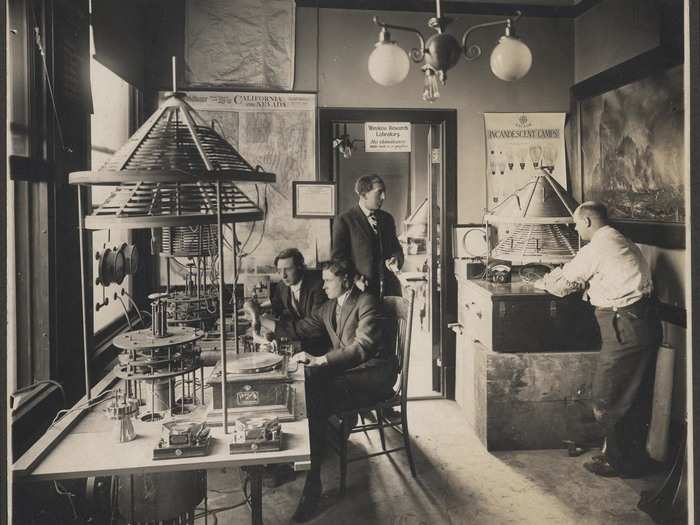
Also in 1909, Cyril Ewell led a Palo Alto-based team that developed the first American-built arc transmitter.
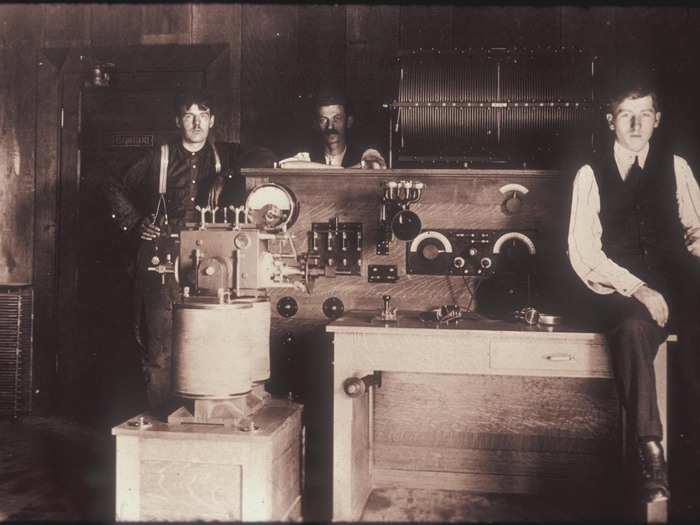
Speaking of military ships, the United States Navy played an important role in the early days of Silicon Valley. In 1933, the Navy purchased Moffett Field, a stretch of land in Sunnyvale, California, as a facility to dock and maintain the USS Macon, a military airship seen here flying over New York.
Moffett Field became a major hub for the young aerospace industry. Companies like Lockheed set up shop there to better serve the Navy. Scientists and researchers found solid, steady work in the area.
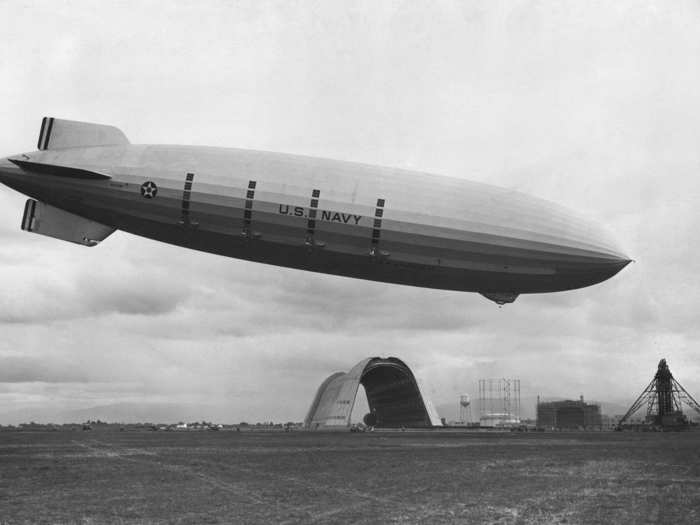
In 1939, the Ames Research Center was founded as a lab for the National Advisory Committee for Aeronautics. In 1949, Ames became home to the world's largest wind tunnel, critical for aerospace research. These days, it's also responsible for a lot of NASA's computer science work.

Hewlett Packard is often credited as the spiritual founder of Silicon Valley. But Stanford grads William Hewlett and Dave Packard didn't make computing equipment until much later. When they started the company in their famous garage, the duo was making oscilloscopes and, during World War 2, radar and artillery technology.
At this point, when people said "computer," they were referring to machines like the famous Eniac, the room-sized beast of a computer that helped the United States break enemy codes during World War II.
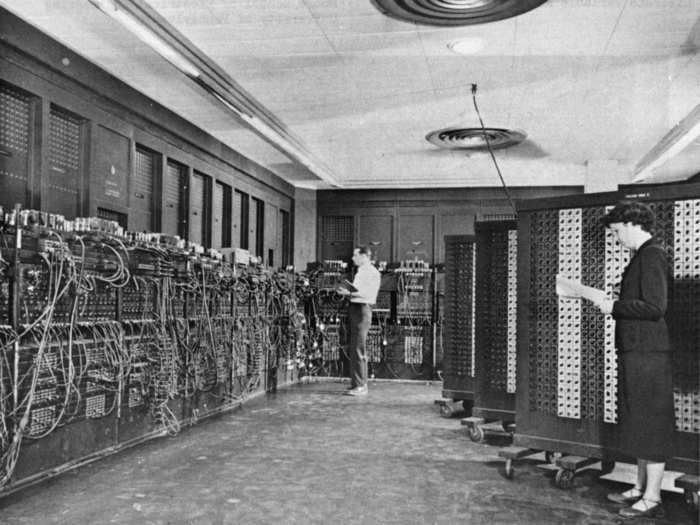
Silicon Valley's tech industry, as we know it today, would get its start with a man named William Shockley. A brilliant scientist, Shockley (middle) co-invented the transistor — one of the most basic components of what we now know as the computer processor — at Bell Labs.
After a series of clashes with management about not getting what he thought was proper credit for the invention of the transistor, Shockley founded Shockley Semiconductor Labs, the first-ever company to make transistors out of silicon rather than germanium. Shockley opted to start the new company in Mountain View, California, so as to be closer to his sick mother.
Shockley tried to get some of his former Bell Labs colleagues to join him in California, but nobody would make the cross-country move. Luckily, local colleges like Stanford University were turning out young graduates with top-tier educations. It helped that Stanford, in particular, encouraged students (like Hewlett and Packard earlier) to stay local and help develop the still-relatively-young California under a concept often called "regional solidarity."
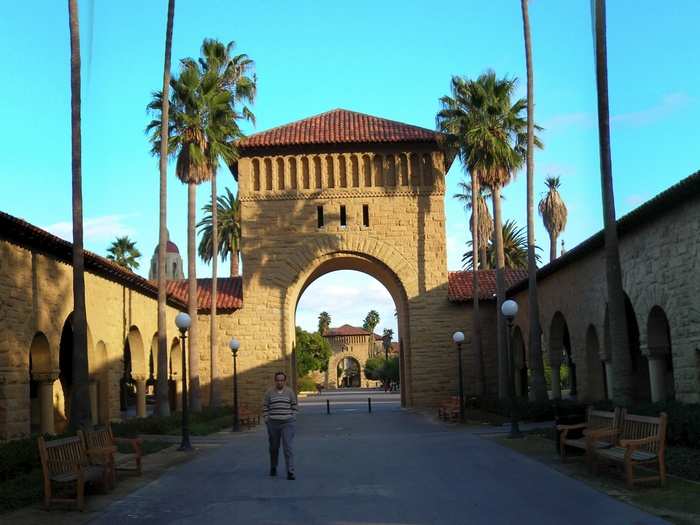
And so, Shockley staffed his company with young, hungry scientists. But Shockley was a lousy manager, constantly changing focus on products and eventually cutting off development of silicon transistors. After being unable to take it anymore, eight of those young scientists quit the company. A furious Shockley dubbed them the "Traitorous Eight" and publicly declared that they would never be successful.
The "Traitorous Eight" teamed up with businessman Sherman Fairchild to create Fairchild Semiconductor, which picked up with silicon transistors where Shockley left off. It was originally founded in this tiny office in Palo Alto. Fairchild gets a lot of credit for helping make computers smaller, faster, and cheaper with its transistor and circuit research and inventions.
When the USSR put Sputnik I into orbit in 1957, it was Fairchild that the newly-formed NASA tapped to make the computer components for the first manned mission to the moon. It was a successful project that seriously put Fairchild and the region on the map.
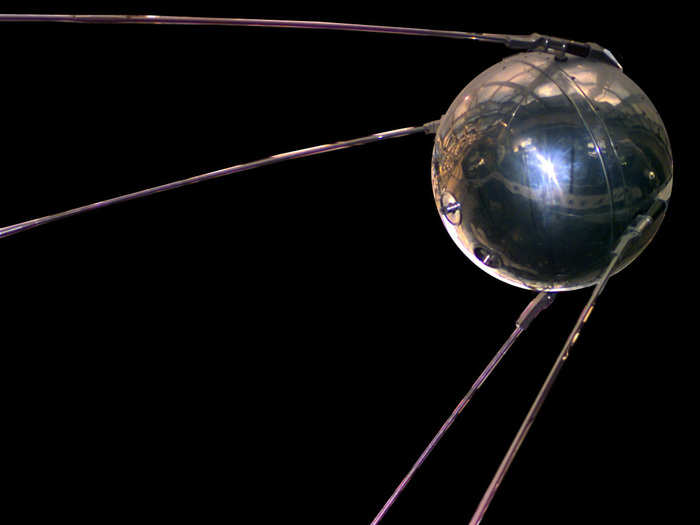
All of the "Traitorous Eight" would go on to cofound or finance some of Silicon Valley's biggest companies. In 1968, Gordon Moore and Robert Noyce would cofound a microprocessor company called Intel, headquartered in Santa Clara. Other so-called "Fairchildren" companies include AMD and NVIDIA.
The public sector was also rapidly contributing to the growing computer scene in Silicon Valley. In 1969, the Stanford Research Institute became home to one of the first four nodes of ARPANET, the first attempt by the United States Department of Defense Advanced Research Project Agency (ARPA) to create a global computer network. It was the first version of today's world wide web.
In 1970, Xerox opened the Xerox PARC lab in Palo Alto. It was PARC that invented many aspects of modern computing, including ethernet networking, the concept of the graphical user interface, laser printers, or computer graphics. PARC would go on to develop the Xerox Alto, a precursor to the modern PC.

Thanks to all these advances, the Valley of Heart's Delight had become a boomtown for the young computer industry. The name really caught on when journalist Don Hoefler titled a three-part report on the semiconductor industry "SILICON VALLEY USA." Even after silicon-based components stopped being the chief export of the area, the name stuck.
In 1972, two financial types with tech industry experience named Eugene Kleiner and Tom Perkins (pictured) raised their first venture capital fund for young companies in the newly-dubbed Silicon Valley trying to get into the space.
Things started moving fast. In 1971, Intel released the Intel 4004 processor, the first that was cheap and reliable enough for home use. When it was followed up in 1973 with the even more useful Intel 8080, a hobbyist scene of amateur computer enthusiasts popped up.
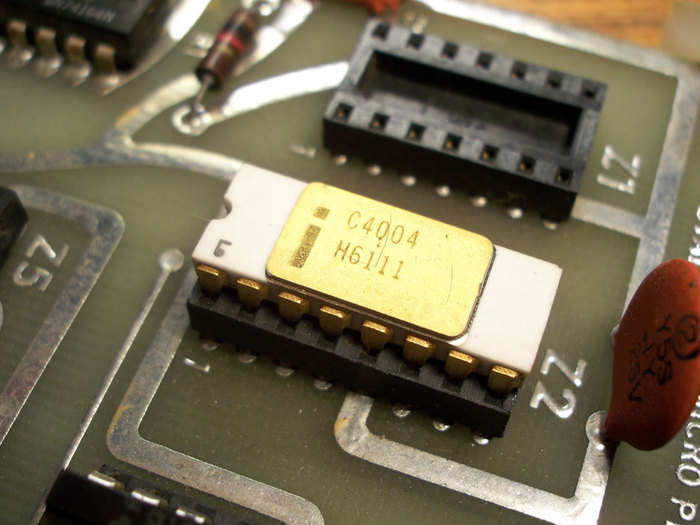
Silicon Valley's local fan group, the Homebrew Computer Club, would turn out to be pivotal to the future of tech when two young enthusiasts named Steve Wozniak and Steve Jobs showed up to its first meeting in 1975.
At the first meeting of the Homebrew Computer Club, Jobs and Wozniak got to try out the Altair 8800, an early microcomputer based on one of those Intel chips.
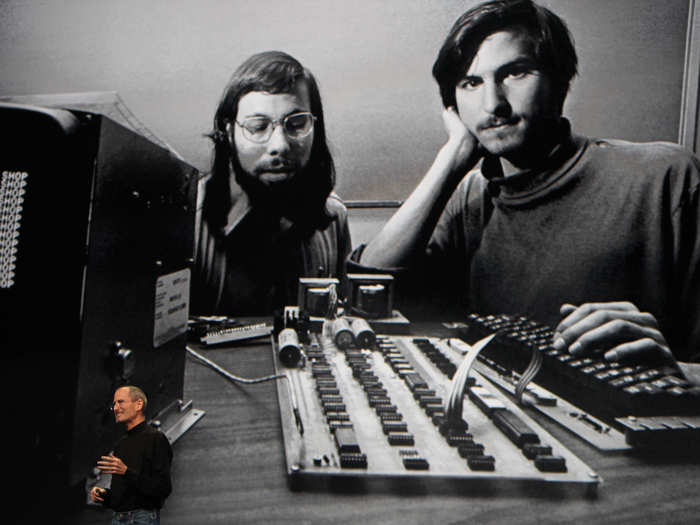
That meeting inspired the duo to create the Apple I, a do-it-yourself computer kit where they'd just sell you the Wozniak-designed motherboard that they built in a garage. Their follow-up, the Apple II, was one of the first-ever real personal computers, and turned Apple Computer into a real company.
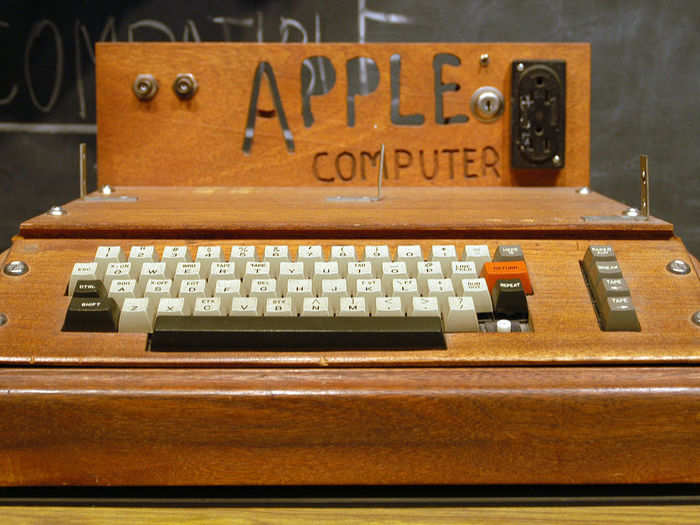
This period also saw the birth of other tech titans, as the demand for software for these new computers grew. Database company Oracle was co-founded by Larry Ellison, Bob Miner, and Ed Oates in 1977.
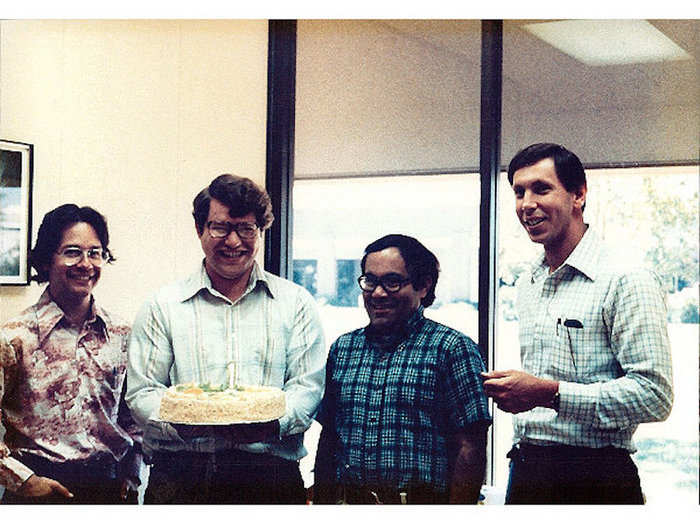
When Apple Computer had its IPO in December of 1980, it jump-started the Silicon Valley scene. Venture capitalists came in droves to try to get in on the boom.
Sand Hill Road, the street in Menlo Park, California where Kleiner Perkins set up, became the hub of the venture capital world, a status it still enjoys today.
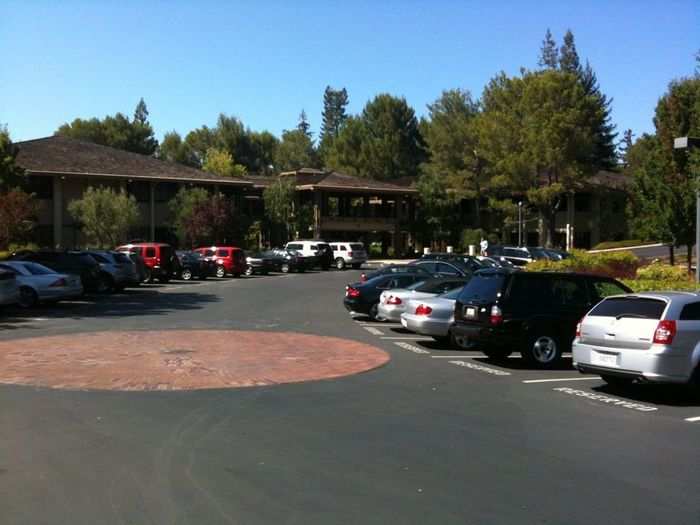
In the eighties, as computers started to slowly but surely work their way into the mainstream, Silicon Valley just kept growing. In 1984, ex-Stanford faculty Leonard Bosack and wife Sandy Lerner would found Cisco Systems, building and selling exact clones of Stanford's networking software.
By the mid-eighties, Silicon Valley was established as the center of the computer industry, which was only on the rise. Sun Microsystems, which made computers and early operating system software was founded by a bunch of Stanford alumni in 1982.
The eighties would give way to the nineties, bringing a new kind of company to Silicon Valley: Thanks to the PC starting to hit the mainstream, and the rise of the internet, 1995-2000 would see companies like Google, Yahoo, eBay, and lots of others hit the scene during the height of the dot-com bubble. Just like HP and Apple before it, Google was founded in a Silicon Valley garage.
Meanwhile, even the old guard of Silicon Valley kept growing, with companies like Intel, Sun, and Silicon Graphics Inc. (SGI) taking over huge campuses all over Silicon Valley. Sun's campus, which it moved into circa 1998, was actually a historic ex-psychiatric hospital.
During the Dot Com Bubble, companies like Sun thought the good times would never end, and so spent a lot of cash that it didn't have to grow beyond a sustainable level. When the bubble finally finished bursting in 2001, it sapped all of Sun's momentum, leaving it vulnerable to a $5.6 billion takeover from Oracle in 2009. In 2011, Oracle sold the Sun campus to Facebook.
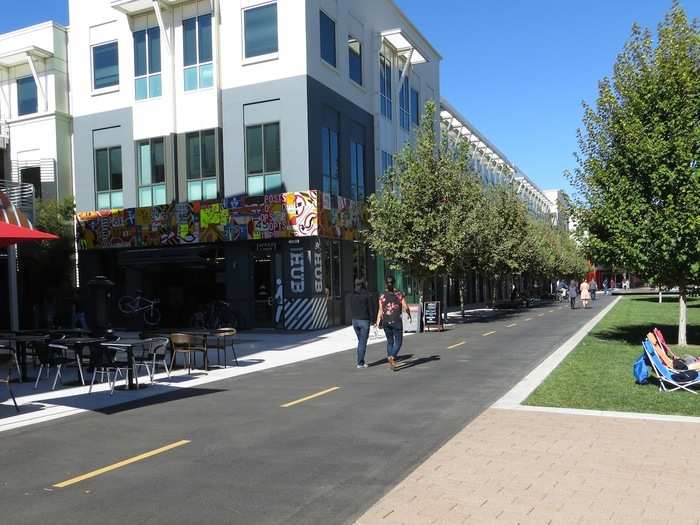
Mark Zuckerberg purposely left the Sun sign on the back of the Facebook sign as a warning to employees that they can never stop improving, or else meet a similar fate.
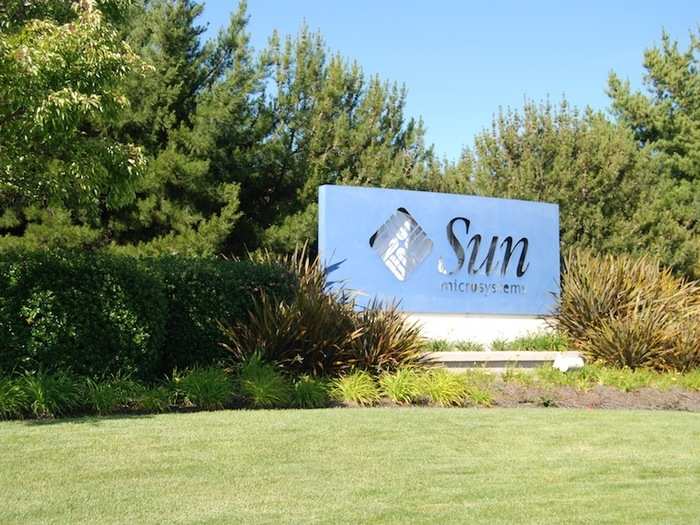
Similarly, Google started to rent the Googleplex campus from Silicon Graphics Inc. in 2003, before buying it outright from them in 2006.
Still, even as things change, Silicon Valley remains the center of the tech universe, with Apple, Google, Facebook, Yahoo, and many more calling it home for the foreseeable future. Apple is even building its new, massive "spaceship" campus in Cupertino, California, right near the old one.
And you know that Silicon Valley has made it into the big time when HBO has a hit series of the same name. And the rest, as they say, is history.
Popular Right Now
Popular Keywords
Advertisement